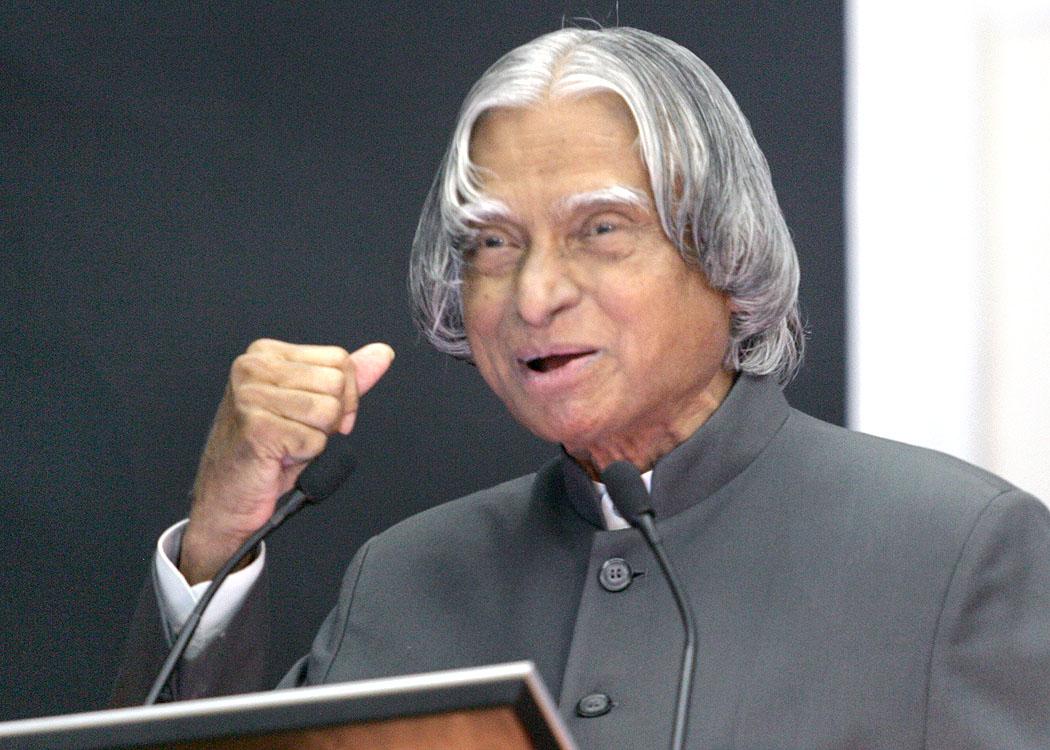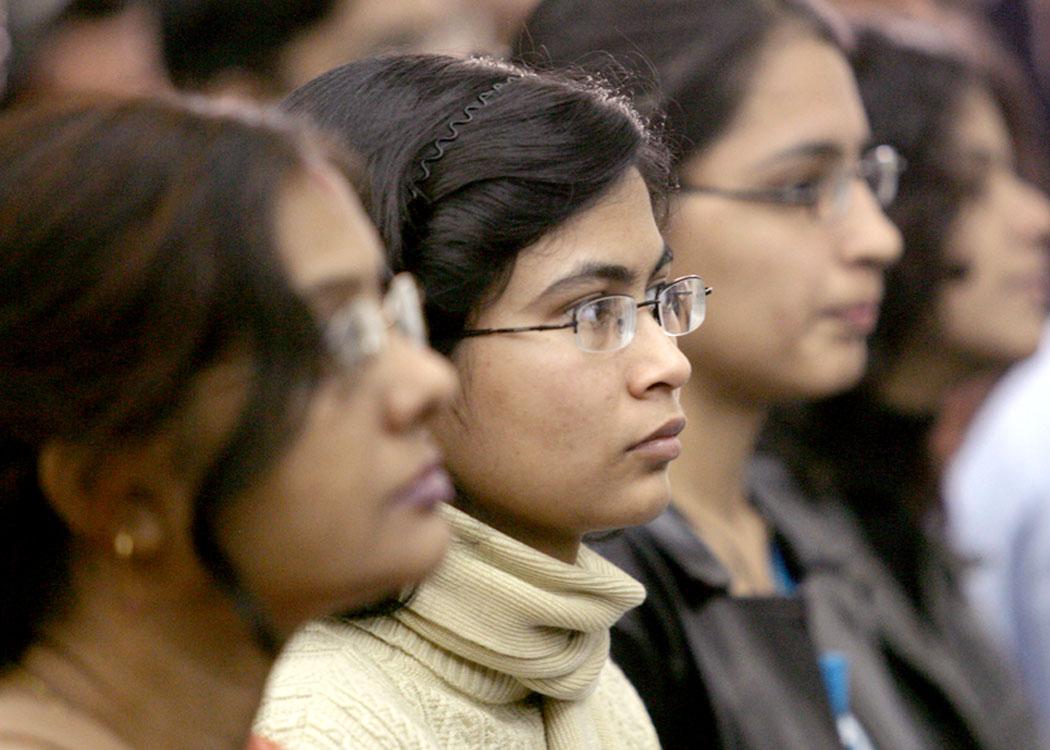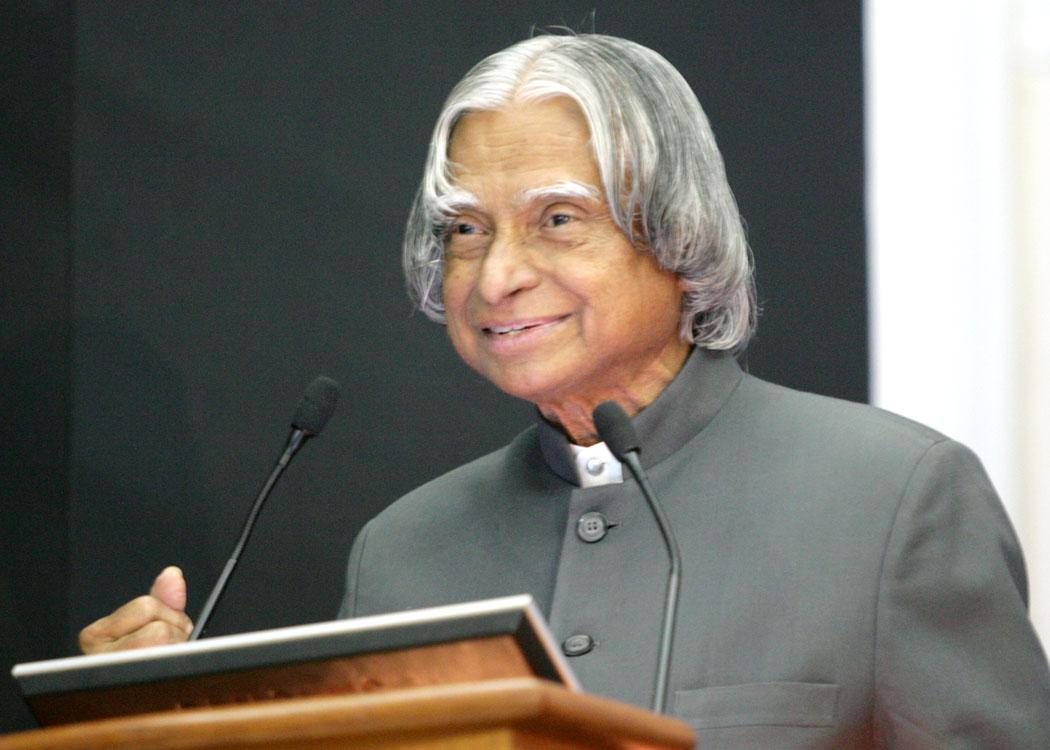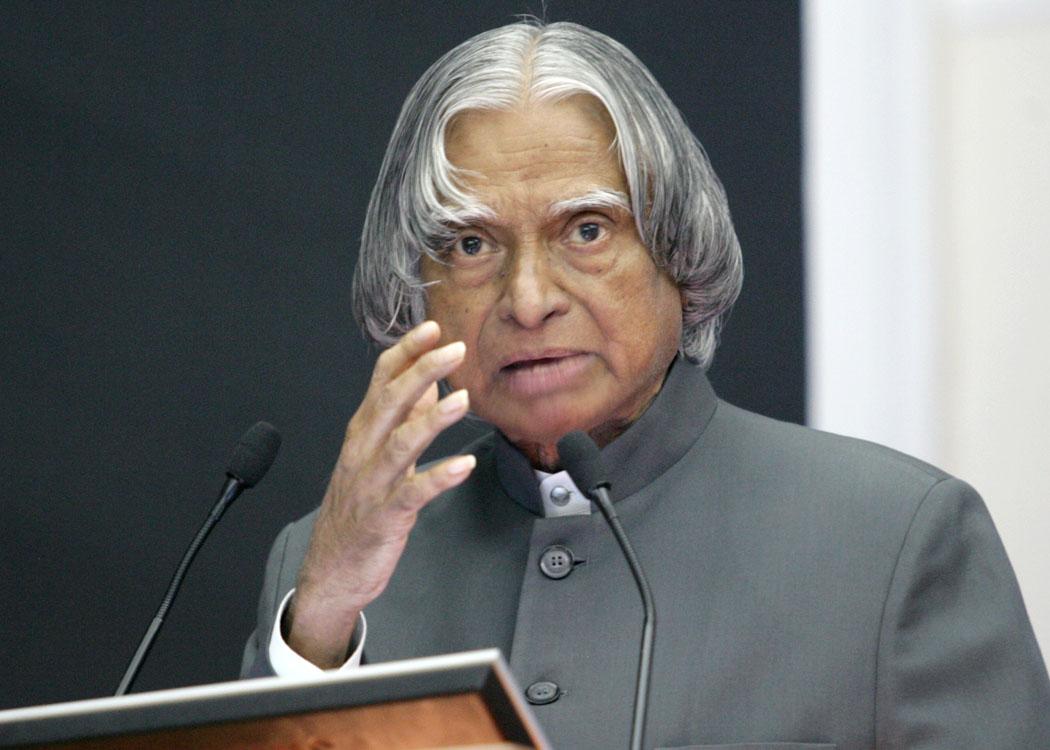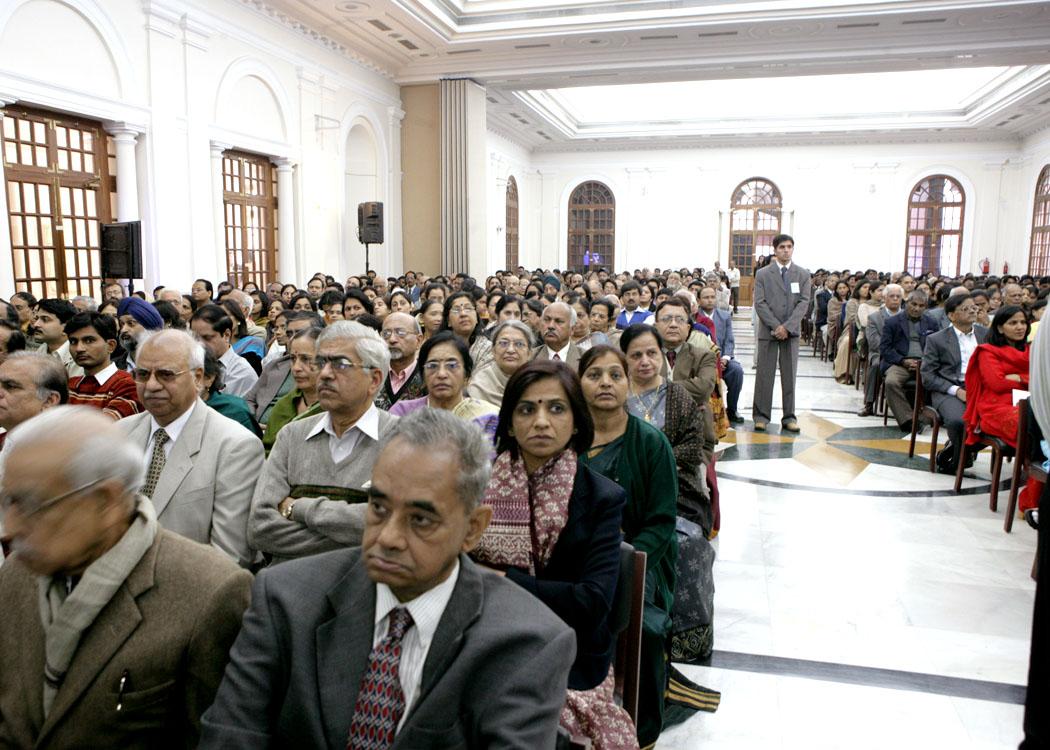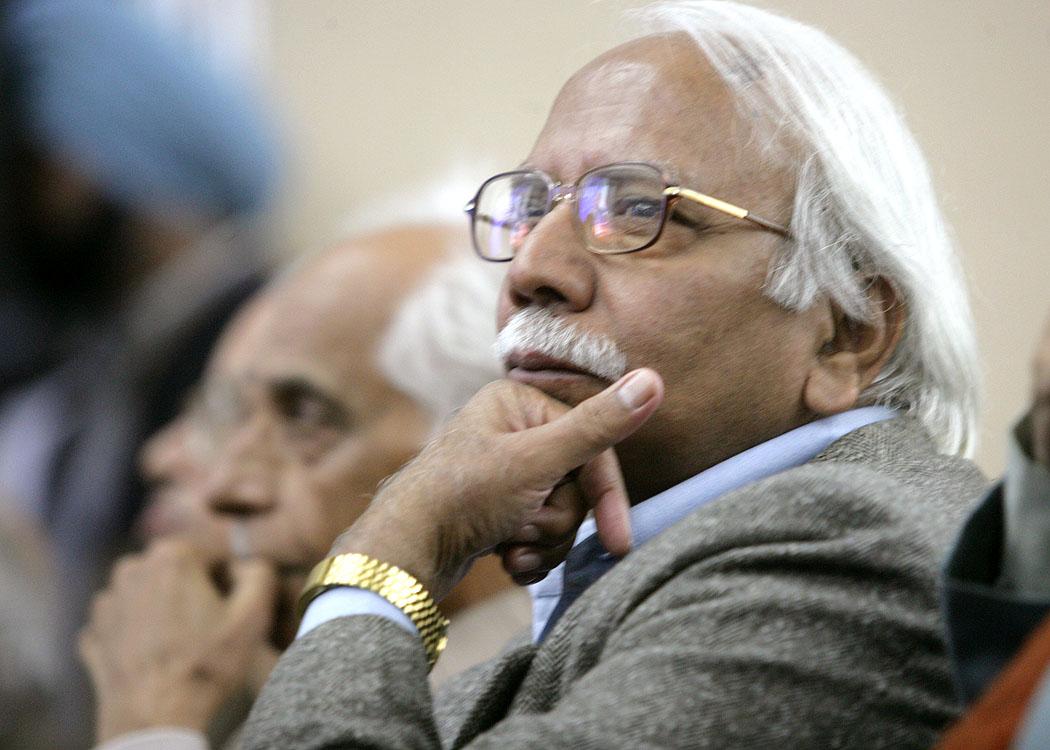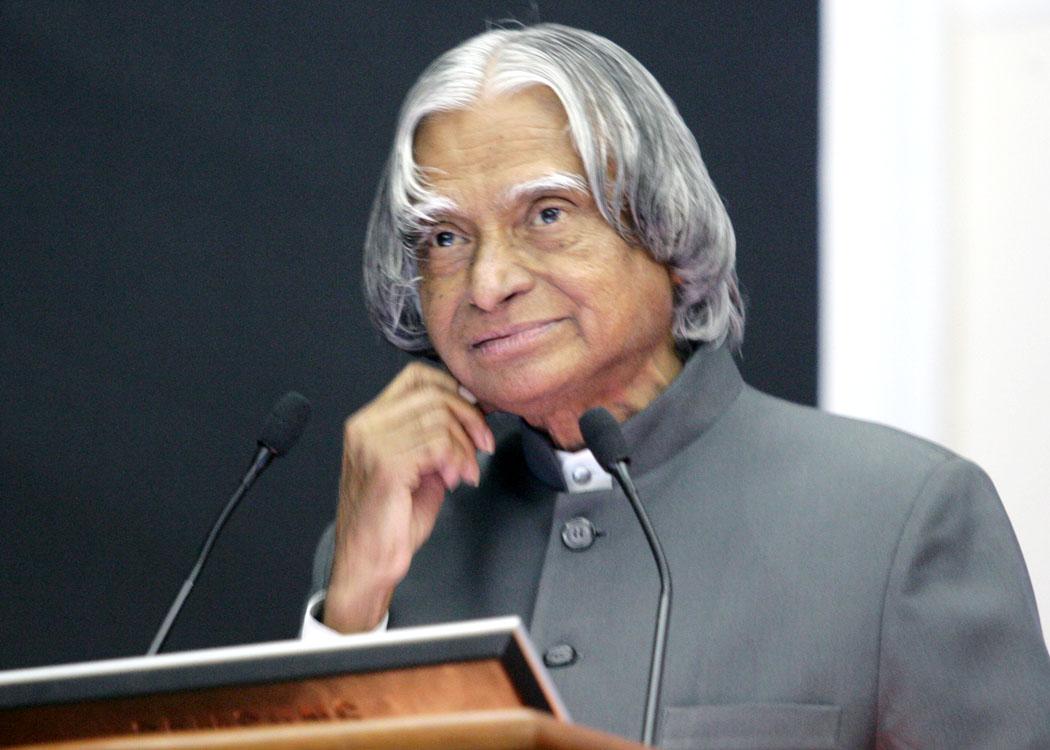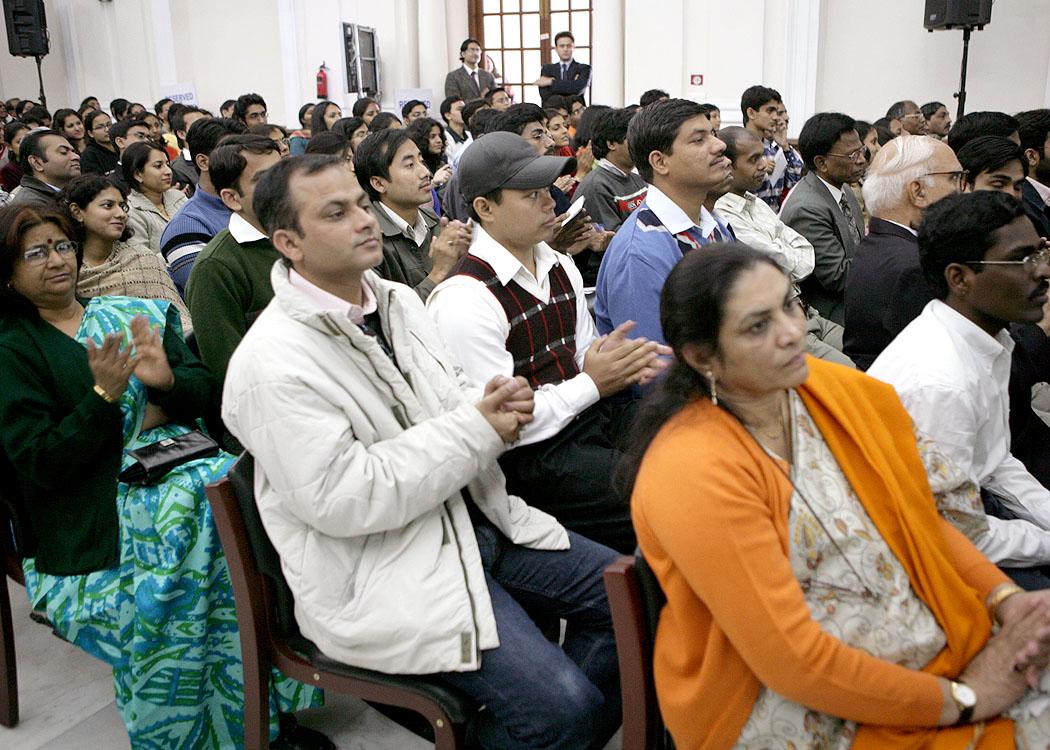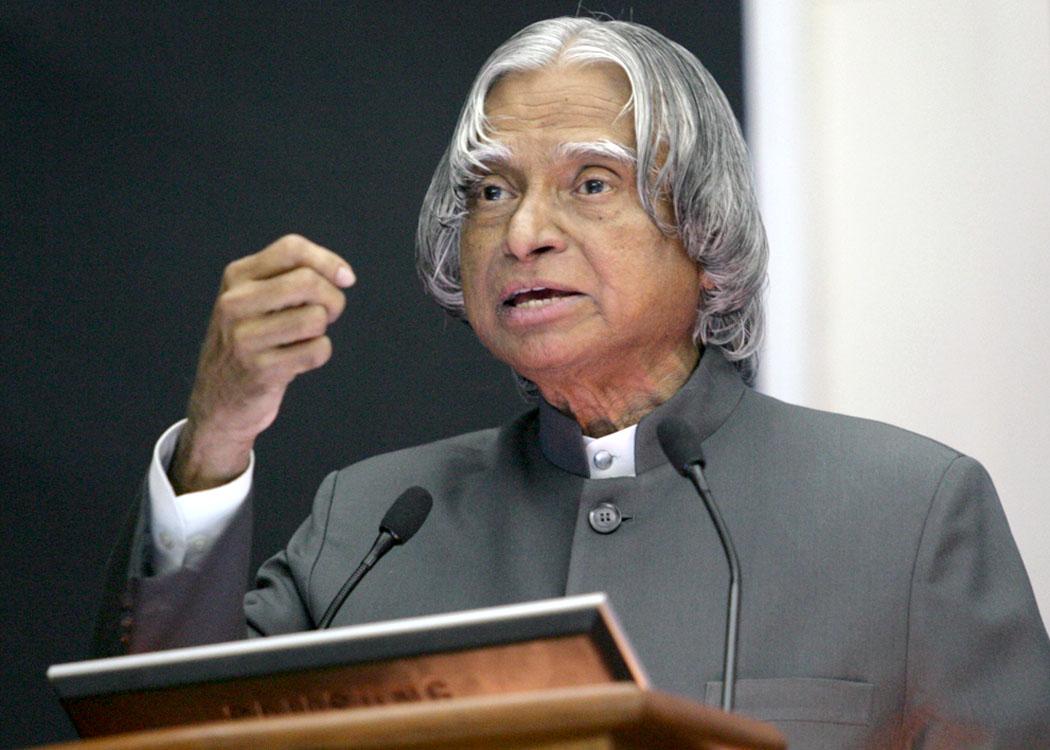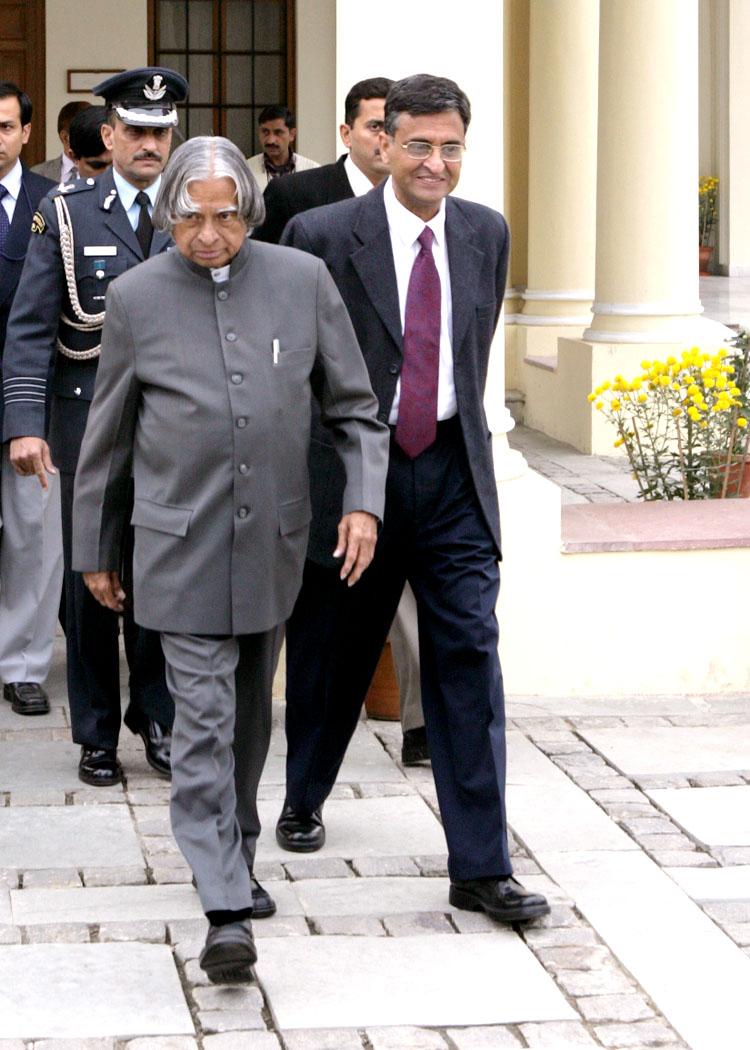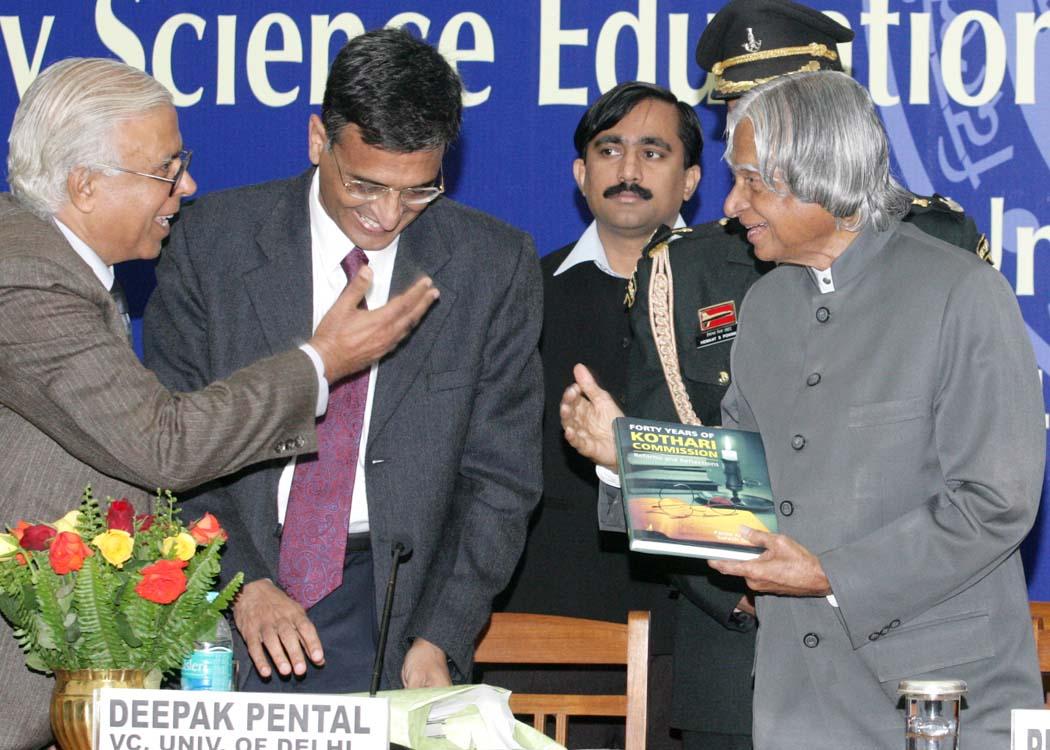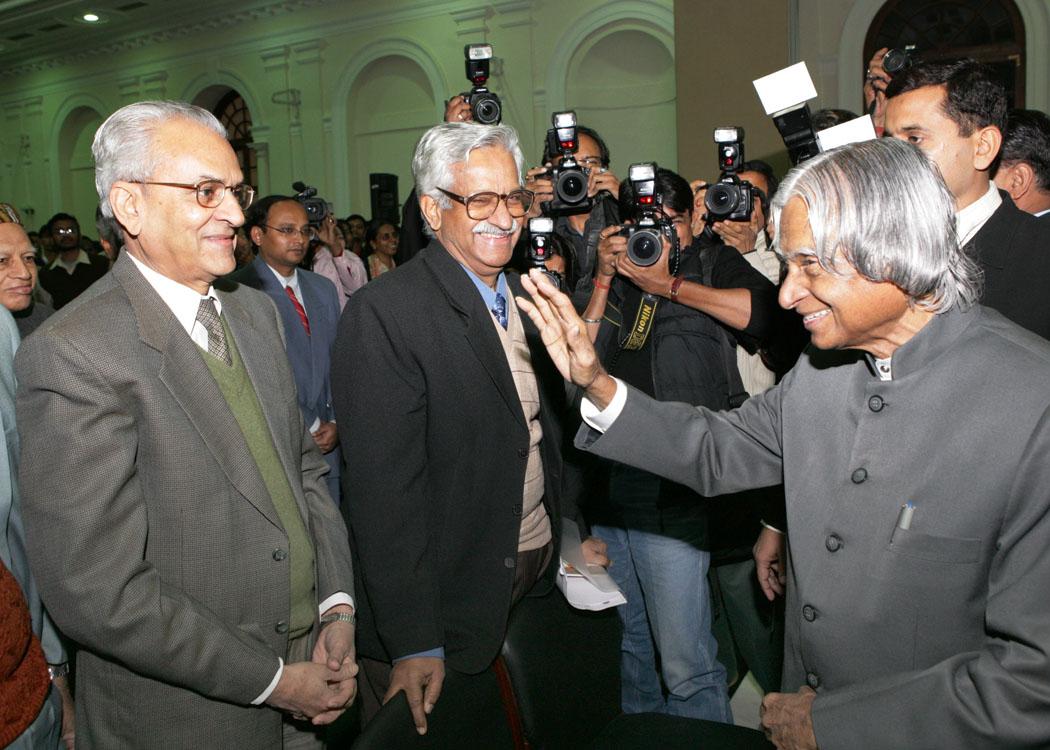Address at the Seminars on ?forty Years of Kothari Commision Recommendations - Quality Science Education and Research in the New Millennium? At University of Delhi, New Delhi
New Delhi : 04-12-2006
Challenges to the Academic Institutions
Creativity leads to thinking,
Thinking provides knowledge,
Knowledge makes you great.?
I am indeed delighted to participate in the Seminar on ?Forty Years of Kothari Commission Recommendations ? Quality Science Education and Research in the New Millennium? being organized by the University of Delhi. I greet the vice-chancellor, faculty members, scientists, students, distinguished guests and friends. I was thinking on this occasion what thoughts I can share with you. I would like to talk on the topic ?Challenges to the Academic Institutions? that will focus on how to attract the best minds towards science and give a purpose to the university education.
I. Attracting the best minds towards science
a.Scientific Magnanimity
I would like to narrate an incident which took place during a function conferring Nobel Laureate Prof. Norman E Borlaug, a well known agricultural scientist and a partner in India?s first Green revolution, with Dr. M S Swaminathan Award, at Vigyan Bhavan, New Delhi on the 15th of March 2005. Prof. Borlaug, at the age of 91, was in the midst of all the praise showered on him from everybody gathered there. When his turn came, he got up and highlighted India?s advancement in the agricultural science and production and said that the political visionary Shri C. Subramaniam and Dr. M S Swaminathan, pioneer in agricultural science were the prime architects of First Green Revolution in India. Even though Prof Norman Borlaug was himself a partner in the first green revolution, he did not make a point on this. He recalled with pride, Dr. Verghese Kurien who ushered White Revolution in India. Then the surprise came. He turned to scientists sitting in the third row, fifth row and eighth row of the audience. He identified Dr. Raja Ram, a wheat specialist, Dr S K Vasal, a maize specialist, Dr. B. R. Barwale, a seed specialist. He said, all these scientists had contributed for India?s and Asia?s agricultural science. Dr. Borlaug introduced them to the audience by asking them to stand and ensured that the audience cheered and greeted the scientists with great enthusiasm. This scene I have not witnessed in our country before. This action of Dr. Norman Borlaug, I call it as ?Scientific Magnanimity?. Friends, if we aspire to achieve great things in life, we need Scientific Magnanimity to focus the young achievers. It is my experience that great mind and great heart go together. This Scientific Magnanimity will motivate the scientific community and nurture team spirit.
b. Dignity to Science
Recently I was reading the two volumes of the book titled ?The Big and the Small? from the Microcosm to the Macrocosm written by Dr. G. Venkataraman. In this latest book, author establishes fascinating link between particle physics and cosmology in two volumes. Since I am in the midst of Scientists and Technologists, I thought of sharing with you an incident narrated in the book about Sir CV Raman. Raman was in the first batch of Bharat Ratna Award winners. The award ceremony was to take place in the last week of January, soon after the Republic Day celebrations of 1954. The then President Dr. Rajendra Prasad wrote to Raman inviting him to be the personal guest in the Rashtrapati Bhavan, when Raman came to Delhi for the award ceremony. He wrote a polite letter, regretting his inability to go. Raman had a noble reason for his inability to attend the investiture ceremony. He explained to the President that he was guiding a Ph.D. student and that thesis was positively due by the last day of January. The student was valiantly trying to wrap it all up and Raman felt, he had to be by the side of the research student, see that the thesis was finished, sign the thesis as the guide and then have it submitted. Here was a scientist who gave up the pomp of a glittering ceremony associated with the highest honour, because he felt that his duty required him to be by the side of the student. It is this character that truly builds science. While we are discussing the need for scientific Magnanimity, Sir C.V.Raman?s great attitude towards his research student thesis and also a third element, the type of scientific challenge which will attract the youth towards science as a carrier. All the three elements have to be looked at together. Let us discuss what are the scientific challenges for the coming decade?
c. Research Challenges
Let me share with you certain scientific challenges that need integrated solution to enrich the life of the people of our planet particularly our nation.
1. In the energy sector, increasing the solar photovoltaic cell efficiency from the existing 15% to 45% using silicon as a base with Carbon Nano Tube is an important research challenge. Scientists in reputed laboratories in the world have established the fact that the alignment of the CNT with the polymer composites substrate is the key issue and this aligned CNT based PV cells would give very high efficiency in photovoltaic conversion. The polymer composites increase contact area for better charge transfer and energy conversion. In this process, the researchers could achieve the efficiency of about 50% at the laboratory scale. The intensity of research in Indian research institutions have to be enhanced to realize commercial production of CNT based Photovoltaic cells.
2. India has to go for nuclear power generation in big way using thorium based reactor. Thorium, a non fissile material, is available in abundance in our country. Intensive research is essential for converting thorium for maximizing its utilization and generating electric power through thorium based reactors.
3. Proteomics is the study of all the proteins expressed by the genome of a cell. It is the logical extension of genomics. Proteomics helps to understand the basic biological processes critical to normal cellular functions as well as the development of diseases. It identifies the essential components of these processes and exploits these components as targets in the development of new methods to prevent or treat diseases. The proteomics programme is done nationally. The type of work involved is huge and challenging, and much bigger than the Human genome programme. There is national programme in proteomics. This has to be given thrust with cooperation of International Scientific community.
4. There are many research and development initiatives and testing of vaccine progressing in the country for prevention of HIV/AIDS disease. It is indeed a big challenge for life science scientists to have an integrated vaccine development leading to production in three years time.
5. Stem cell research through three areas such as Adult stem cells, umbilical cord stem cells, and embryonic stem cells has to be pursued on a mission mode for finding cure for many diseases.
6. In many places in our planet, we experience severe earthquakes resulting in loss of life, loss of wealth and in some cases it destroys the decades of progress made by the country and its valuable civilizational heritage. India has earthquake problems periodically in certain regions. During my recent visit abroad, I found serious research in Iceland, Ukraine and Russia by young scientists. It is essential India has to work on mission mode research for forecasting the earthquakes using multiple parameters using precursors such as pre-shock conditions, electromagnetic phenomena prior to final rupture and atmospheric and ionospheric anomalies.
7. The quantum of rainfall in a particular area for a particular cloud condition within a specified duration is not being determined by the present monsoon prediction system. Recent heavy rains in Mumbai, Chennai, Hyderabad in our nation and Katrina hurricane in US has created enormous loss of life and property. This brings out the necessity for global monsoon research for determining intensity and quantum of rain in a particular cloud condition through a validated prediction system with detailed research. With this system scientists should be able to provide the information for the particular cloud condition, how much rain will come in what period through the use of Polorimetric radar.
Solutions to these seven problems: first two relating to energy area, third relating to healthcare, fourth relating to HIV/AIDS, fifth relating to stem cell research, sixth relating to forecasting of earthquake and seventh relating to precision forecasting of rain content for particular cloud condition are challenging areas for the young researchers. In this connection, I would like to mention that the Kothari Commission Report had emphasized the need for basic research being conducted in universities and the science education at all levels should be strongly reinforced through study of application of local environment and industry. This recommendation is valid even in today?s context.
So far, I was discussing three types of actions needed to attract the young to take up science as a carrier. There is another important aspect, which we have to consider. After 10+2 study, children normally decide with parental pressure to choose from technology driven or science driven areas for their further studies. Here I would suggest the necessity of a national science cadre to attract the best minds for taking up science as their life time mission.
d. Science Cadre
During my interaction with the students, Ms. Arunava Roy, of 1st Year ? Biotechnology from the University of Calcutta asked me the following question:
" A majority of the bright students at the high school level aspire to become a doctor or an engineer. How can these rich minds be motivated towards taking up research as a first grade career option?"
This question is indeed is the reflection of the feelings of most of the students who are in the 10+2 stage. We have to find the right answer. I have had many discussions with parents also. The parents spend almost all their earnings in order to educate their children, since they see the education as the best way of promising an assured career. They even go to the extent of sacrificing their personal luxuries and get loans to educate the children. The only vision they have in their eyes is to see well settled sons and daughters with guaranteed profession. They see this happen if their children pursue a degree in Engineering, Management, Medicine or administrative services. They do not see the pursuit of pure sciences and research guaranteeing this.
This, I consider as an important area of concern of the nation and it needs the attention of the scientific community as a whole. In my view, it is essential for the nation to assure a career for those who wish to pursue science as a mission. This will attract many students with the full support of the parents. We should work for the creation of a science cadre, with clear mission goals, well defined growth path and attractive salaries. There should be a minimum annual intake of about 400 M.Sc and 200 Ph.Ds with assured career growth in the organisations such as CSIR, DST, Department of Earth Sciences, Department of Bio Technology, Department of Agriculture, ISRO, DRDO, Atomic Energy, and the Universities. This could be discussed by the academies of sciences and scientific advisory committee to the cabinet for making recommendation to the cabinet. Starting a number of Indian Institutes of Science Education and Research is definitely a good effort towards attracting youth towards science as a career. Now, I would like to discuss the role of universities in generating entrepreneurs who will be employment generators.
II. Enriching the University Education
Employment generation through entrepreneurship
Over the years there has been substantial growth in our higher educational system and we are generating over 3 million graduates every year. However, our employment generation system is not in a position to absorb the graduates passing out from the universities. Also, there is a large mismatch between the skills required for the modern economy and the education imparted to most of these students. The higher education system should build capacities leading to generation of employment opportunities. Also, the educational system should highlight the importance of entrepreneurship and prepare the students right from the college education to get oriented towards setting up of the enterprises which will provide them creativity, freedom and ability to generate wealth. The university system should carve out a nine month course on specific skills for all the graduates within the overall time available for the degree course and equip the students with an additional diploma or certificate in special skills. The banking system should provide venture capital to all our youth who have unique ideas for creating innovative enterprises. Banks have to be proactive to support the innovative products for enabling wealth generation by young entrepreneurs by providing them venture capital for innovative ideas. Finally, there must be an economic pull for human resources through generation of marketable products and enhancement of purchasing power among the people. Such a collaborative system will enable us to generate employment generators rather than employment seekers. When India is moving towards a knowledge society, there is a need to ensure that all the youth of the nation either acquire higher educational and research qualifications or acquire world class special skills. This can be met through a new cadre called Global Human Resource Cadre.
III. Global Human Resources Cadre
In the 21st century, world needs large number of talented youth with higher education for the task of knowledge acquisition, knowledge imparting, knowledge creation and knowledge sharing. At present, India has five hundred and forty million youth under the age of 25, which will continuously be growing till the year 2050. Keeping this resource in mind, the Universities and educational systems in India have to create two cadres of personnel: (1) Youth with expertise on special skills (2) Youth with higher education with research and technology expertise. These two cadres will be required not only for powering the manufacturing and services sector of India but also will be needed for fulfilling the human resource requirements of various countries. It is essential to increase the throughput of the higher education system from the existing 9% to 20% by the year 2015, 30% by the year 2020 and 50% by the year 2040. Others who are not covered by the higher education system will have world-class skill sets. Hence our education system should undertake the mission of generating the employable Global Human Resource cadre for the knowledge society of the future.
Conclusion
Research, discoveries and development in one area of science has to be communicated with other areas so that valuable products can be generated through convergence of technologies and a systems science approach gets developed. We are already witnessing convergence of information, communication, bio-technology and nano sciences. A new science called Intelligent Bioscience with Bio-Fabs coupled with Genetic Engineering is in the horizon which would lead to a disease free, happy and more intelligent human habitat with longevity and high human capabilities. Convergence of bio-nano-info technologies can lead to the development of nano robots. Nano robots when they are injected into a patient, my expert friends say, will diagnose and deliver the treatment exclusively in the affected area and then the nano-robot gets digested as it is a DNA based product and there are many more applications. Universities have an important role for contributing in convergence of technologies. .
My best wishes to all the participants of the Seminar on "Forty Years of Kothari Commission Recommendations - Quality Science Education and Research in the New Millennium" success in their mission of promoting scientific temper among the youth of the nation.
May God bless you.

